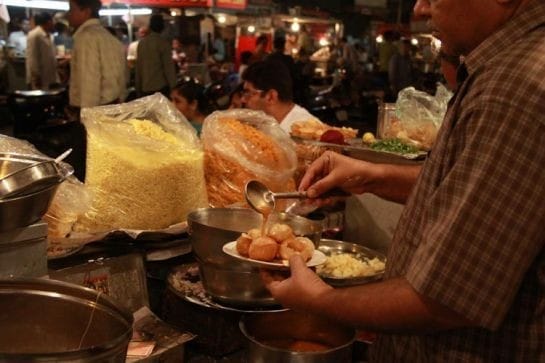Street food is an integral part of the Indian culinary landscape, and it plays a significant role in the country’s economy. India is a land of diverse cuisines, and the street food culture is an essential aspect of Indian food heritage. Street food in India is affordable, delicious, and widely available, and it caters to all segments of society. From the bustling streets of Mumbai to the narrow lanes of Old Delhi, street food is ubiquitous across India.
The street food industry in India is a significant contributor to the country’s economy, providing employment opportunities to millions of people across the country. According to a report by the National Restaurant Association of India, the street food industry in India generates revenue of over INR 3 lakh crore annually and provides employment to over 5 million people.
Street food vendors in India operate in a vast and unorganized sector, with many working in informal markets without any formal regulation or oversight. However, the street food industry in India is slowly transitioning to formalization, with many cities introducing licensing and regulation processes to improve hygiene and safety standards.
The growth of the street food industry has also led to the emergence of new entrepreneurial opportunities in India. Many street food vendors have transformed their businesses into full-fledged restaurants, while others have started food delivery services, catering businesses, and food trucks.
The street food industry in India has also been a significant driver of tourism in the country. Tourists from all over the world come to India to experience the country’s vibrant and diverse street food culture. Street food in India is not only about the food, but it is also about the people, culture, and traditions of the country.
The street food industry in India has also been instrumental in promoting local agriculture and food systems. Street food vendors in India source their ingredients locally, supporting small-scale farmers and promoting sustainable agriculture practices. In many cases, street food vendors have also become advocates for local ingredients, promoting the use of indigenous produce and traditional cooking methods.
Despite the many benefits of the street food industry in India, it faces many challenges. The industry is still largely unregulated, and many street food vendors operate in unsanitary conditions, raising concerns about food safety and hygiene. Additionally, many street food vendors struggle to obtain financing and access to formal markets due to the lack of formalization in the industry.
To address these challenges, many organizations and governments are working towards the formalization of the street food industry in India. In 2018, the Indian government launched the “Street Food Vendors” scheme, providing loans and financial assistance to street food vendors across the country. The scheme aims to provide a platform for street food vendors to promote their businesses and improve their livelihoods.
In conclusion, the street food industry in India is a vital part of the country’s economy, providing employment opportunities, promoting local agriculture and food systems, and driving tourism. However, the industry faces many challenges, and formalization and regulation are necessary to ensure hygiene and safety standards are met. With the right support and infrastructure, the street food industry in India can continue to grow and contribute to the country’s economy and cultural heritage.










